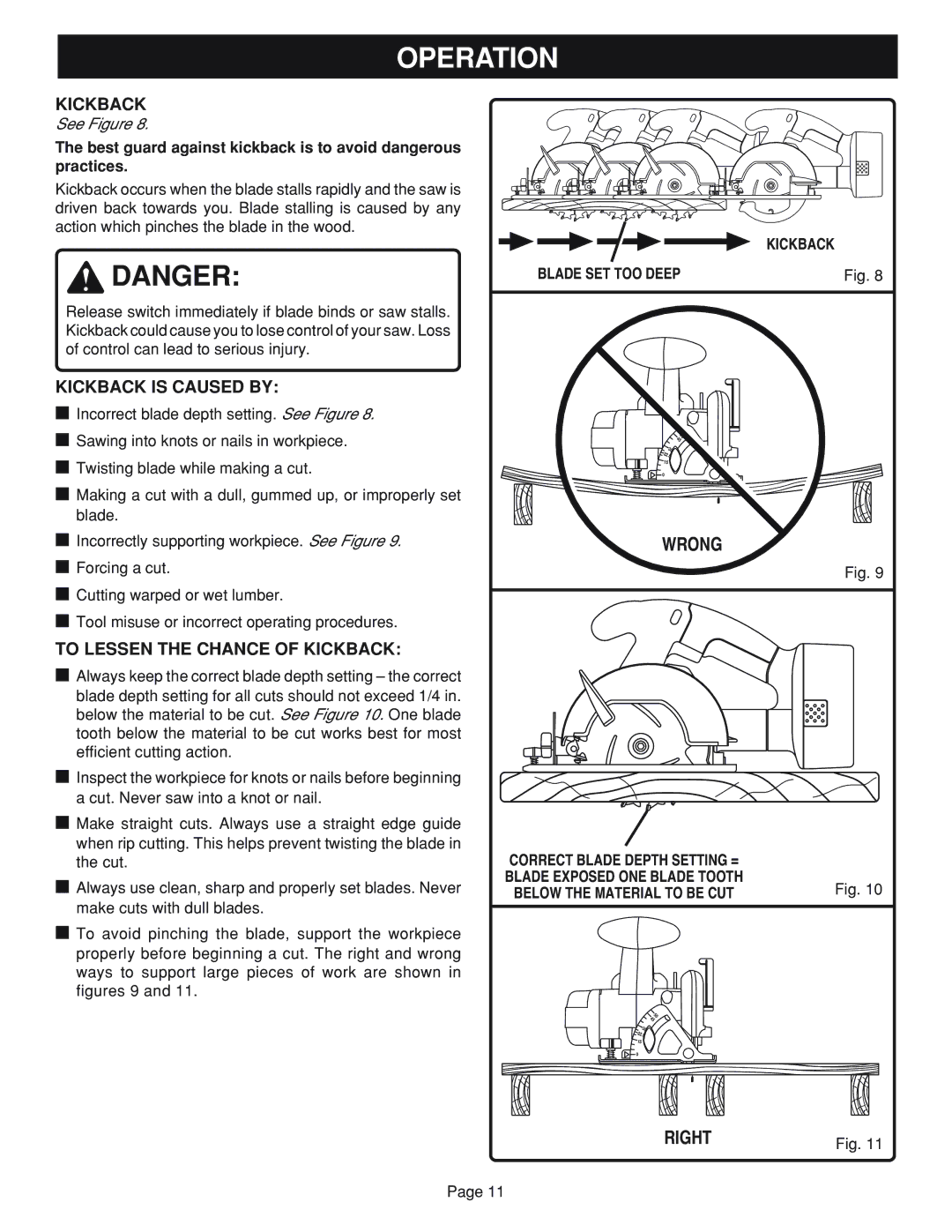
OPERATION
KICKBACK
See Figure 8.
The best guard against kickback is to avoid dangerous practices.
Kickback occurs when the blade stalls rapidly and the saw is driven back towards you. Blade stalling is caused by any action which pinches the blade in the wood.
![]() DANGER:
DANGER:
Release switch immediately if blade binds or saw stalls. Kickback could cause you to lose control of your saw. Loss of control can lead to serious injury.
KICKBACK IS CAUSED BY:
■Incorrect blade depth setting. See Figure 8.
■Sawing into knots or nails in workpiece.
■Twisting blade while making a cut.
■Making a cut with a dull, gummed up, or improperly set blade.
■Incorrectly supporting workpiece. See Figure 9.
■Forcing a cut.
■Cutting warped or wet lumber.
■Tool misuse or incorrect operating procedures.
TO LESSEN THE CHANCE OF KICKBACK:
■Always keep the correct blade depth setting Ð the correct blade depth setting for all cuts should not exceed 1/4 in. below the material to be cut. See Figure 10. One blade tooth below the material to be cut works best for most efficient cutting action.
■Inspect the workpiece for knots or nails before beginning a cut. Never saw into a knot or nail.
■Make straight cuts. Always use a straight edge guide when rip cutting. This helps prevent twisting the blade in the cut.
■Always use clean, sharp and properly set blades. Never make cuts with dull blades.
■To avoid pinching the blade, support the workpiece properly before beginning a cut. The right and wrong ways to support large pieces of work are shown in figures 9 and 11.
KICKBACK
BLADE SET TOO DEEP | Fig. 8 |
|
|
50
45
30 22.5
15
0
WRONG
Fig. 9
CORRECT BLADE DEPTH SETTING = |
|
BLADE EXPOSED ONE BLADE TOOTH | Fig. 10 |
BELOW THE MATERIAL TO BE CUT |
50
45
30 22.5
15
0
RIGHT | Fig. 11 |
Page 11
